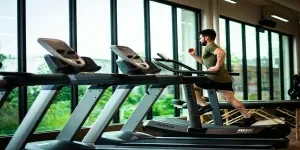Table of Contents
● Introduction
● Types of Yoga Blocks and Their Uses
● Market Trends and Key Considerations for 2025
● Top Yoga Guns and Features to Look For
● Conclusion
Introduction
Yoga blocks are essential tools in both beginner and advanced yoga practices, offering stability, support, and enhanced flexibility during various poses. Available in a variety of materials such as foam, cork, and wood, they help users achieve proper alignment and increase the range of motion. Whether used for balance, deepening stretches, or providing cushioning for joint protection, yoga blocks are versatile accessories that elevate the overall yoga experience. As the popularity of yoga continues to grow, the demand for high-quality, reliable yoga blocks also increases, making it crucial for businesses to understand the different options available and choose the right models that meet the needs of diverse practitioners.
Types of Yoga Blocks and Their Uses
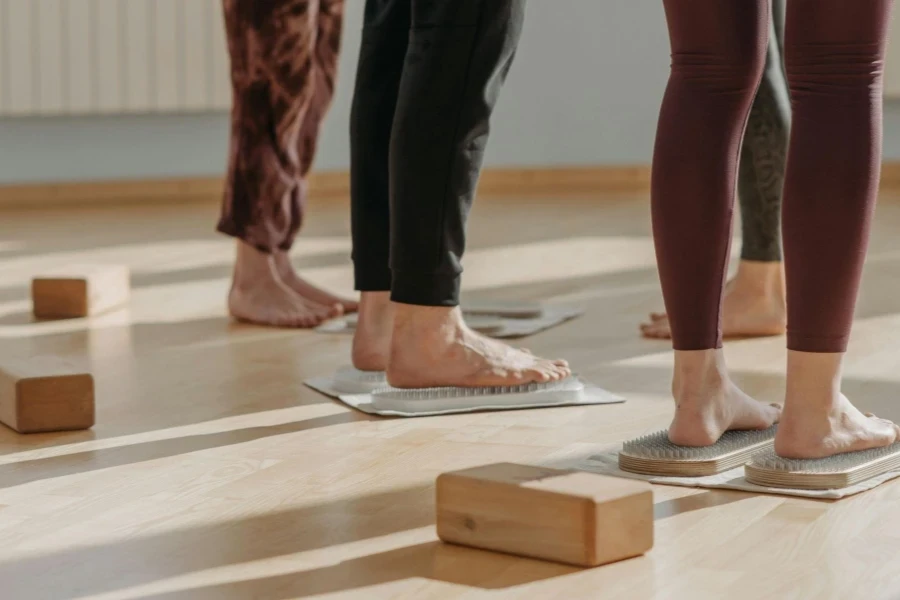
Yoga blocks are essential tools that provide support, stability, and versatility for practitioners across all levels. Whether it’s for a beginner working on flexibility or an advanced practitioner seeking deeper postures, choosing the right block material can significantly enhance the experience. Each type of block offers distinct advantages in terms of comfort, durability, and performance. Understanding the features and benefits of different yoga blocks can ensure that practitioners select the best tool for their needs, helping them achieve improved alignment, stability, and comfort during their practice.
Foam blocks: Lightweight and ideal for beginners
Foam yoga blocks are the most popular choice for beginners due to their lightness, softness, and affordability. These blocks offer a comfortable, forgiving surface, which helps new practitioners improve their posture and flexibility without straining. The foam material is not only lightweight but also non-slip, providing stability during various poses. Beginners often use foam blocks to assist with reach and alignment, particularly in stretches or poses that require additional height. Although foam blocks are less firm than other materials, they are an ideal starting point for individuals just beginning their yoga journey.
Cork blocks: Eco-friendly and stable for advanced practitioners
Cork yoga blocks offer a firmer and more stable alternative to foam, making them a preferred choice for advanced practitioners. Known for their eco-friendly properties, cork blocks are made from sustainable materials and provide a higher density, which translates to greater support during deeper stretches and complex poses. Their natural composition ensures stability during standing poses and inversions, where additional firmness is essential. Despite being heavier than foam, cork blocks provide a solid foundation and contribute to a more grounded, secure practice, making them ideal for those with a well-established yoga routine.
Wood blocks: Durable and firm for deeper postures
Wooden yoga blocks are prized for their durability and solid support, making them an excellent choice for practitioners seeking firm assistance in advanced poses. The rigid nature of wooden blocks ensures they remain stable during dynamic movements, providing reliable support during challenging postures such as deep backbends, twists, and standing poses. While wood blocks are more substantial and less forgiving than foam or cork, they are ideal for individuals who want to deepen their practice and require unwavering support. Their longevity and resistance to wear make them a good investment for serious practitioners.
Specialty shapes and features: Egg-shaped, beveled edges, and more
In addition to traditional rectangular blocks, there are now specialty-shaped yoga blocks designed to meet specific needs. Egg-shaped blocks, for instance, provide a more ergonomic design, offering gentle support during restorative and backbend poses. The rounded shape ensures comfort, reducing pressure on sensitive areas of the body, such as the spine and joints. Beveled-edge blocks are designed to provide a more dynamic and comfortable support, enhancing alignment during poses that involve the wrists, neck, or lower back. These innovative designs cater to practitioners looking for greater comfort and stability during specific postures, making them a great option for enhancing flexibility and alignment.
Market Trends and Key Considerations for 2025
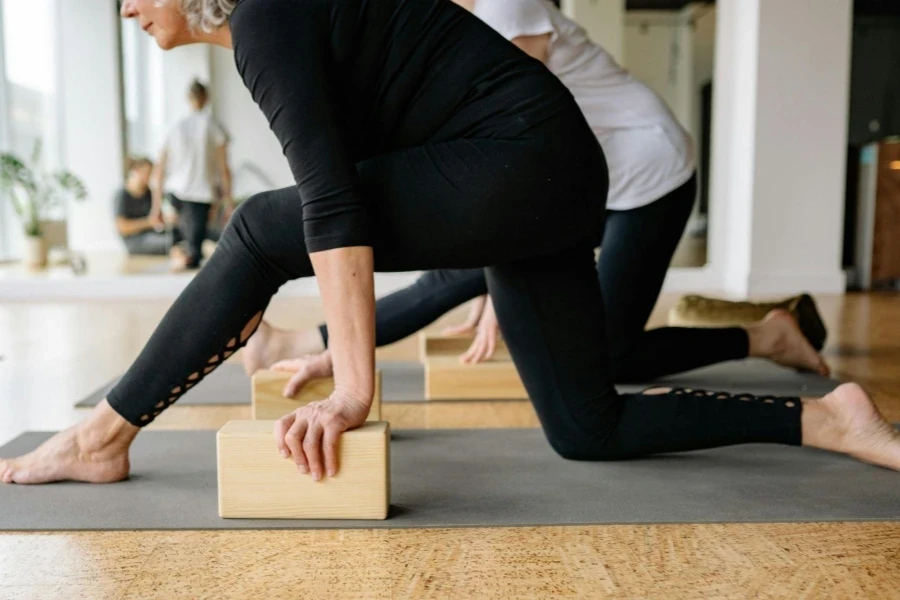
The growing demand for sustainable materials
Sustainability is a driving force in the evolution of the yoga block market, as consumers increasingly prioritize eco-friendly products. In 2025, businesses are responding by incorporating sustainable materials into their yoga block offerings. Cork, bamboo, and natural rubber have emerged as popular choices due to their minimal environmental impact, durability, and renewable nature. Cork, for instance, is highly favored for its firm yet comfortable support in yoga poses, while bamboo is known for its strength and aesthetic appeal. These materials not only align with the growing eco-conscious sentiment among consumers but also help meet stricter environmental regulations in manufacturing and product lifecycle management.
Moreover, sustainability extends beyond just the raw materials. Businesses are now more mindful of the entire product lifecycle, including production processes, transportation, and packaging. Companies that utilize recyclable or biodegradable packaging and reduce carbon footprints are gaining a competitive edge in the market. The trend towards sustainability is further fueled by consumers’ increasing willingness to pay a premium for products that align with their environmental values, creating new opportunities for businesses that prioritize eco-friendly practices in both product design and packaging.
The rise of multi-functional yoga blocks
The role of yoga blocks is expanding beyond traditional use, with a growing demand for multi-functional products that serve a wider range of fitness activities. Today’s consumers seek versatility in their yoga equipment, opting for blocks that can also assist in activities like Pilates, stretching, and even physical therapy. Multi-functional blocks feature innovative designs, such as adjustable heights, ergonomic shapes, or built-in handles, to provide users with a broader scope of usage. This trend reflects a shift toward more dynamic and holistic fitness routines, where yoga blocks are no longer limited to yoga alone but can support a variety of practices.
In addition to their versatility, multi-functional yoga blocks are gaining popularity due to their space-saving features. Compact and lightweight, they can be easily stored or transported, making them particularly appealing to individuals with limited space, such as those living in apartments or urban environments. By offering multiple uses in a single product, these blocks not only cater to diverse fitness needs but also provide value for money. This trend of multi-functionality positions yoga blocks as a must-have for fitness enthusiasts looking for practical and adaptable equipment that complements a range of physical activities.
Key factors to consider when selecting yoga blocks: Material, size, and durability
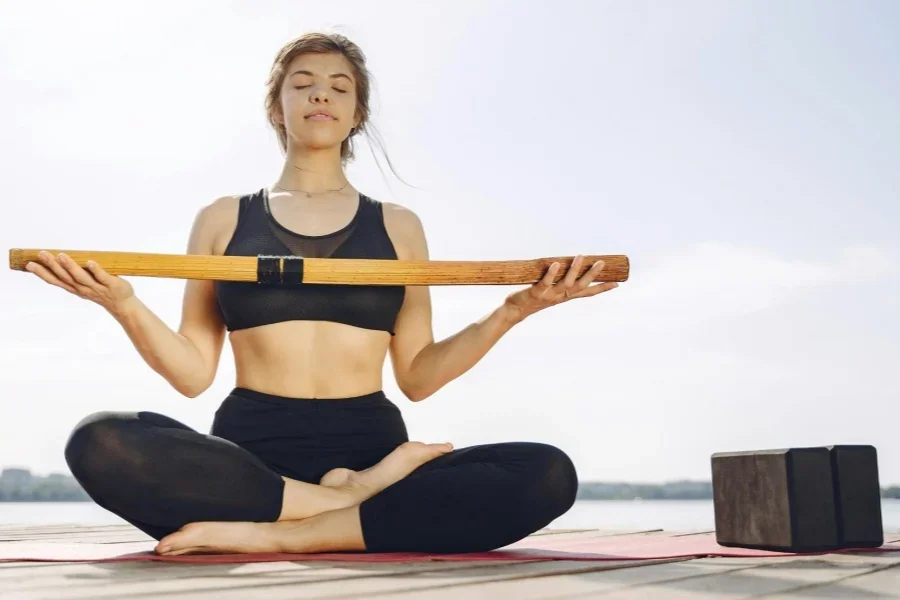
When selecting yoga blocks for commercial use or as part of a larger inventory, it’s important to consider several key factors that influence both product quality and customer satisfaction. Material is one of the most crucial considerations. As mentioned, eco-friendly materials like cork, bamboo, and natural rubber are becoming increasingly popular, not just for their sustainability but also for their durability. Businesses should prioritize materials that offer long-lasting performance, even under frequent use.
Size and shape also play a vital role in the selection process. Yoga blocks come in different sizes to suit various body types and practice styles. Standard blocks are typically 9 x 6 x 4 inches, but larger blocks are available for individuals who need extra support. Additionally, some blocks feature beveled edges or contoured designs to enhance comfort, particularly for those new to yoga or with specific physical needs.
Also, durability is another key factor. High-density foam blocks, while lightweight, tend to degrade more quickly with heavy use. Conversely, cork or bamboo blocks offer more resistance to wear and tear, making them a better choice for businesses looking for products with a longer lifespan. Durability directly impacts customer satisfaction and return on investment, as higher-quality products require fewer replacements over time.
Top Yoga Guns and Features to Look For
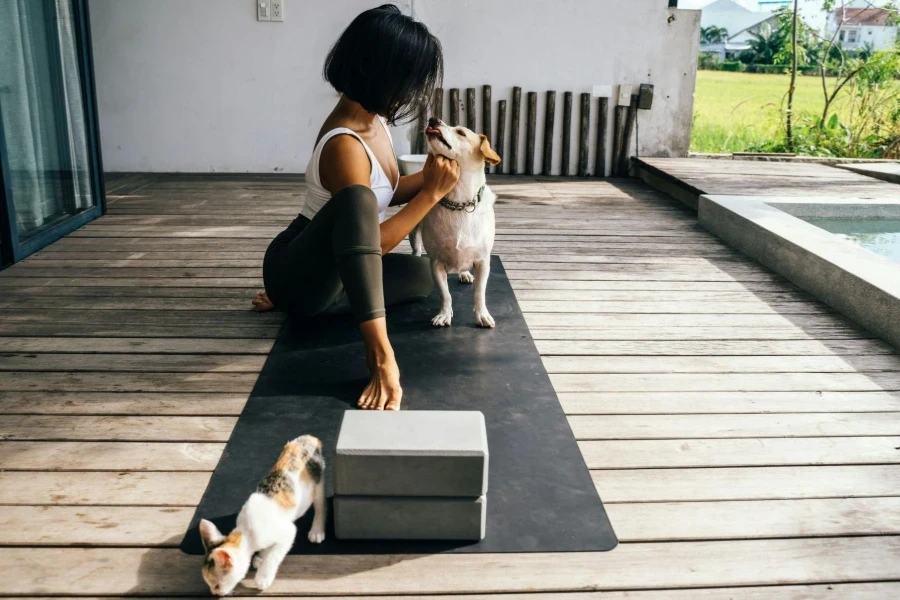
Best foam yoga blocks: Affordable and functional
Foam yoga blocks are a favorite for their affordability and practicality, particularly for beginners. These lightweight blocks are made from durable EVA material, offering just the right amount of support for various yoga poses. Whether used for bringing the floor closer or deepening stretches, foam blocks are versatile, making them ideal for businesses seeking cost-effective yoga accessories. Their soft yet supportive design provides comfort during practice, though they may lack the firmness required for advanced poses. Despite this, their lightweight and low-cost nature make foam blocks a staple in most yoga studios.
Leading cork yoga blocks: Stability and eco-conscious appeal
Cork yoga blocks stand out for their firm support and eco-friendly appeal, making them a go-to for environmentally-conscious practitioners. The natural cork material offers a non-slip surface that delivers excellent stability in more advanced poses, making them ideal for those who require a reliable base. Along with their practical use, cork blocks’ renewable, biodegradable properties resonate with sustainability-focused businesses. Their earthy, natural aesthetic also appeals to consumers seeking both functional and eco-conscious yoga accessories, creating a growing demand for these sturdy and stylish blocks.
Premium wood blocks and emerging innovations in yoga block design
Wooden yoga blocks are the epitome of durability and support, perfect for deeper stretches and advanced practices. Made from sustainable materials like bamboo or hevea wood, these blocks offer a stable, firm surface that helps maintain proper alignment. Their strength and aesthetic appeal make them a premium choice for yoga studios and wellness centers looking for high-quality products. Additionally, innovations in block design, such as ergonomic shapes and reduced weight without sacrificing firmness, are making wood blocks even more user-friendly. These evolving designs provide businesses with unique offerings to meet the diverse needs of today’s yoga practitioners.
Conclusion
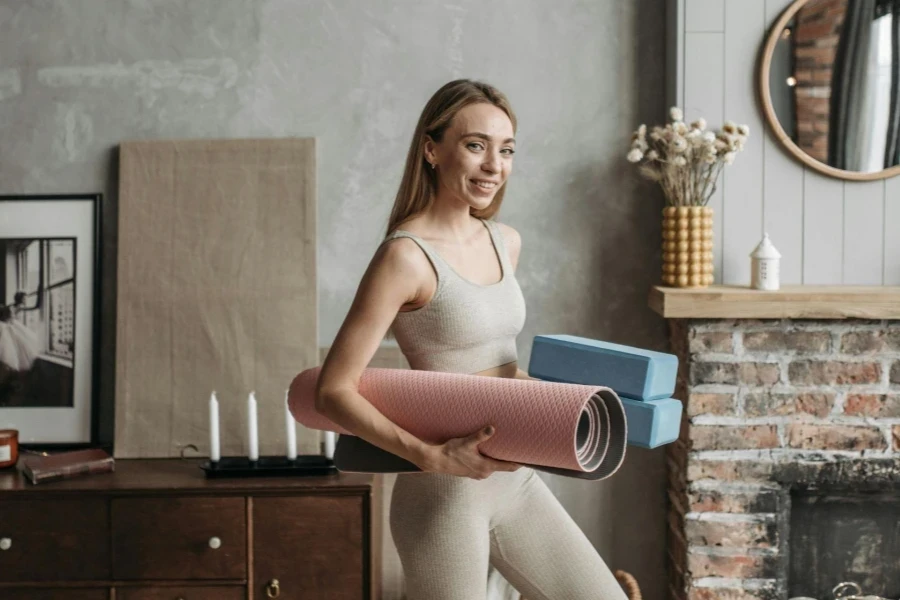
In the ever-evolving landscape of yoga accessories, choosing the right yoga block in 2025 comes down to balancing functionality, sustainability, and market demand. With yoga’s popularity continuing to rise, particularly among health-conscious consumers, understanding the materials, designs, and benefits that set the best blocks apart is crucial for retailers. Biodegradable options, foam alternatives, and the demand for eco-friendly manufacturing are key trends gaining traction. Retailers looking to stock the most relevant products should focus on versatility, durability, and a clear focus on customer preferences for sustainable options. This focus will ensure the right balance between product quality, eco-conscious choices, and consumer satisfaction.




